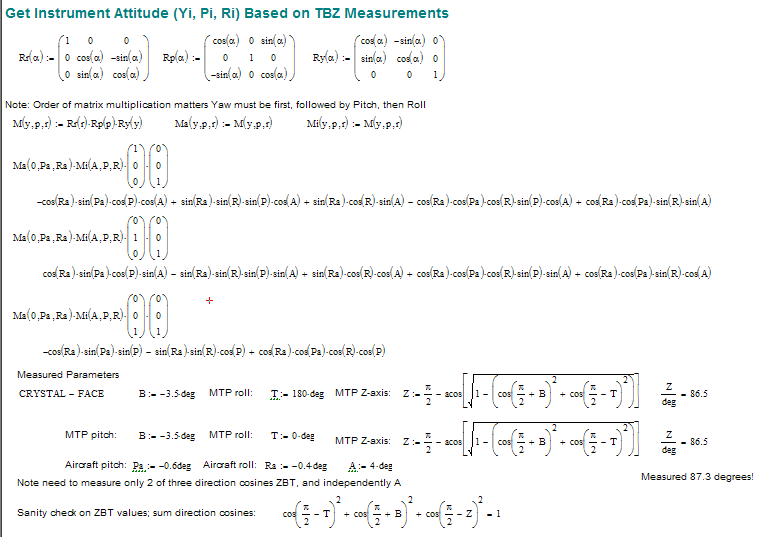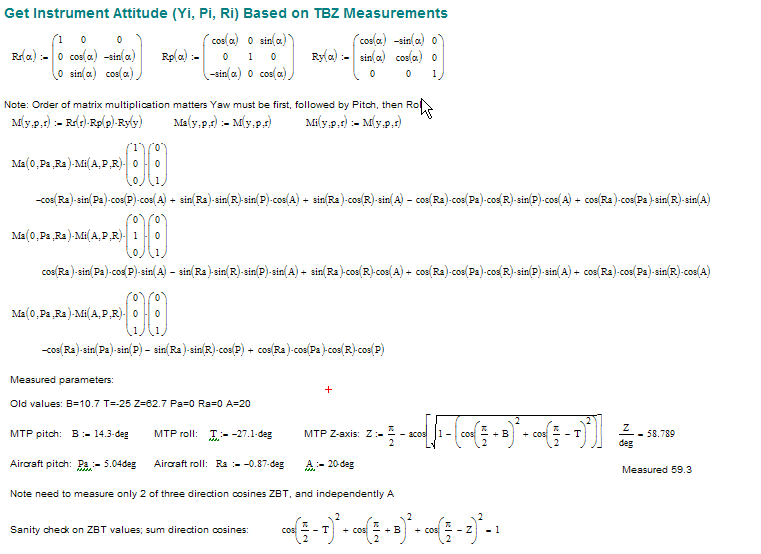a) Roll-like axis (measure pitch-like angle B=-3.5 degrees)
b) Pitch-like axis (measure roll-like angle T=4.6 degrees)
c) Yaw-like axis (measure angle of normal Z=87.1 degrees)
d) Pointing bar
a) Roll-like axis (measure pitch-like angle B=-3.5 degrees) |
b) Pitch-like axis (measure roll-like angle T=4.6 degrees) |
c) Yaw-like axis (measure angle of normal Z=87.1 degrees) |
d) Pointing bar |



